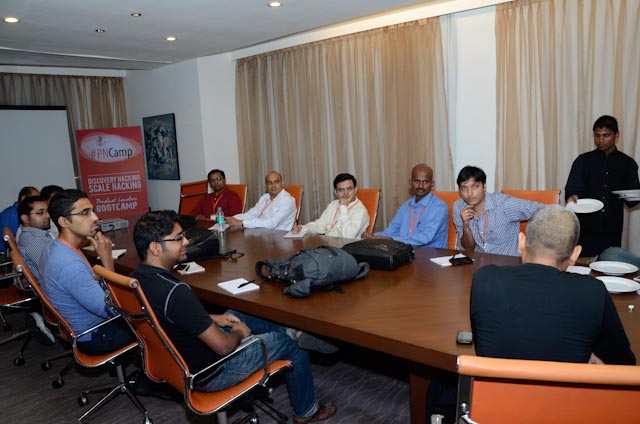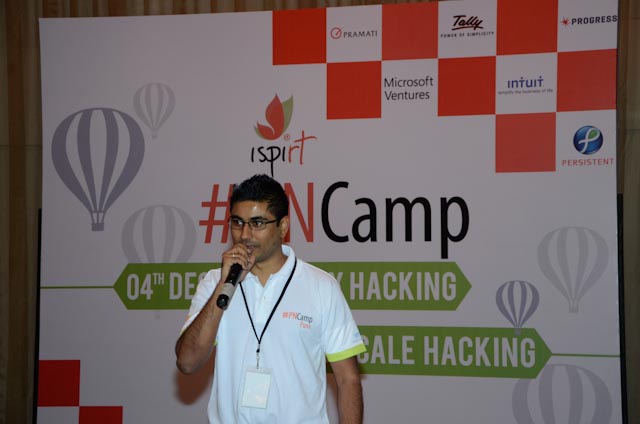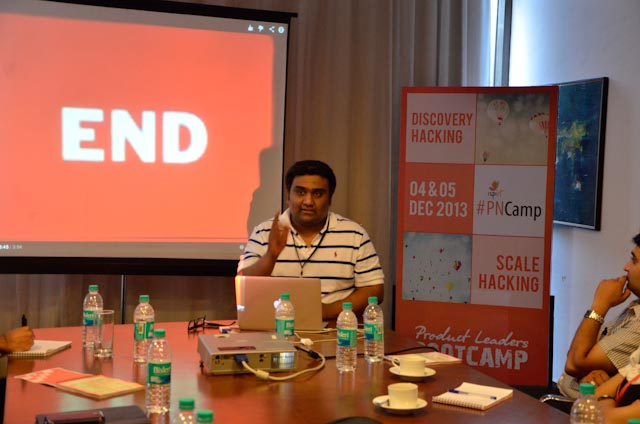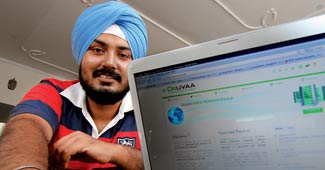Learnings from iSPIRT Product Roundtable: Building a supercharged team in Silicon Valley
How should Indian entrepreneurs think about hiring and scaling teams in Silicon Valley? What are the thorniest hiring challenges? Who should the first hires be? How can founders scale culture globally?
To focus on this topic, iSPIRT organized its 2nd Bay Area playbook roundtable– “Building a supercharged team in Silicon Valley”. It was moderated by Jaspreet Singh, Founder and CEO of Druva, a leading platform startup that operates across the Bay Area and Pune. Other participants included the founders of RecruiterBox, StrikeDeck, Supply.AI, 42Gears and ShieldSquare.
This blog shares themes that emerged from a discussion focused on Leadership, Hiring, and Growth.
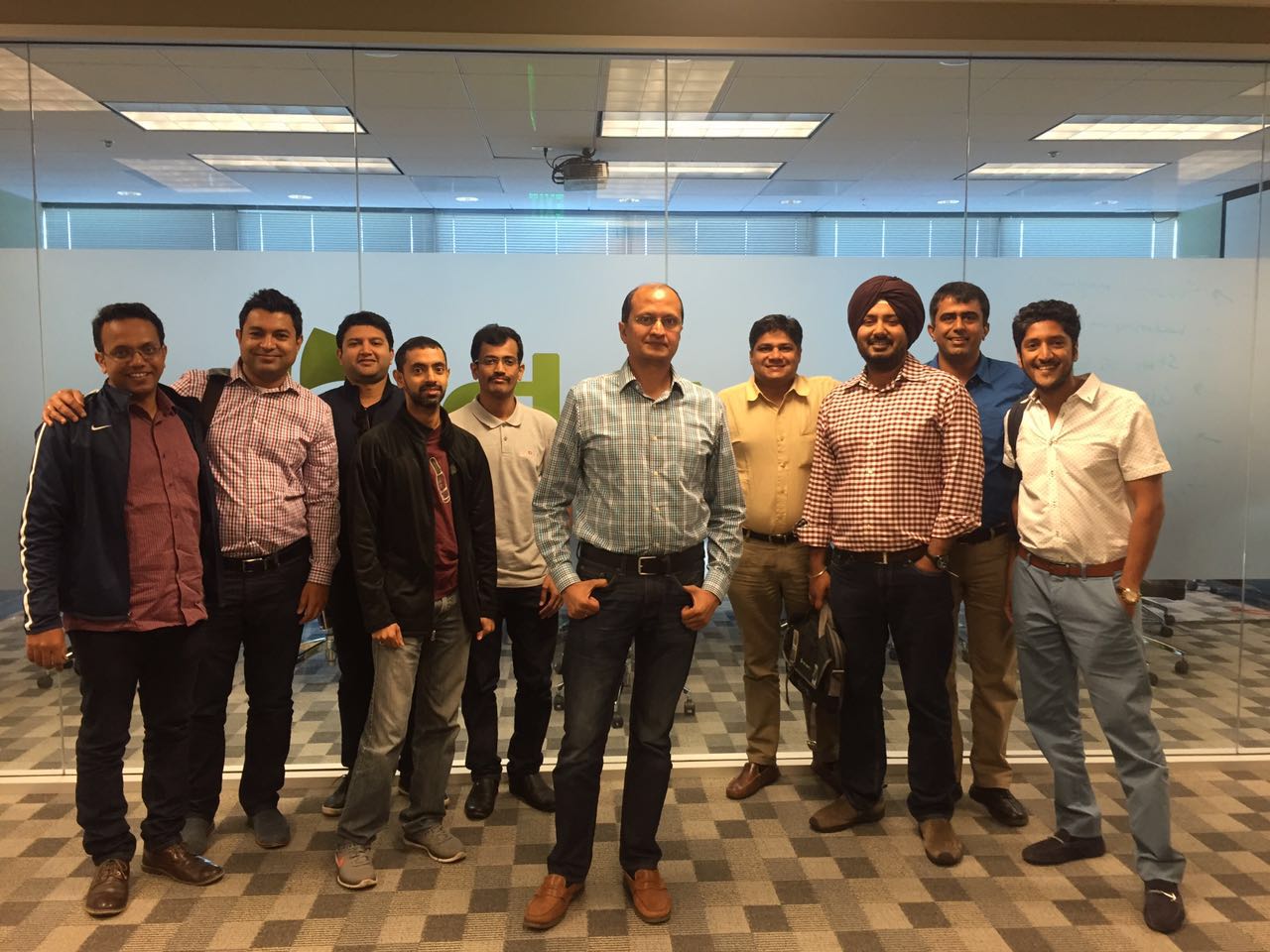 Hiring for wartime is different than for peacetime
Hiring for wartime is different than for peacetime
Borrowing from Ben Horowitz’s “peacetime versus wartime CEOs” concept, the group discussed how startup hiring is more like wartime whereas many well-meaning management principles are derived from peacetime environments, where certain scale and stability are assumed. Key ideas discussed included:
- In early stages, you just need 10X type talent i.e. women and men who can scale 10X on any problem thrown at them, and those who are 10X aligned with the founder’s vision
- Hire those who understand the “truth you know”, are deeply curious and aligned to your mission.
- This often means talking to 3-5 candidates to find the right portfolio of skills that works for you
- Using a sporting analogy, hire athletes who can scale as player-coaches, versus people coaches
- Stress test in interviews with questions as “if you fail in 90 days, where will you fail”?
- Recruiting is exactly like sales and founders should use all channels at their disposal including networks, investors/advisors, and personal meetings with talent in critical areas
Leadership and culture strengthen from hard Socratic questions
All the founders in the roundtable observed that scaling personally is the starting point to becoming a great leader and building strong leadership. Key ideas were discussed around how founders can scale.
- How do you know that you’re a good leader? One answer proposed was “when teams consistently come to you for advice” and you can see the advice worked.
- Startup founders need to balance “dictate” and “debate” – two default modes most founders fall within. Build leadership teams that counter and balance their default modes.
- As startups scale, founders should scale by metaphorically poking holes (asking the right business, product, or people questions) versus having a tendency to own every key decision
- If a founder really wants to go deep into a functional area (e.g. Product or Marketing) when they already have VPs, it helps to explain why the Founder wishes to own a function, take permission and build the personal trust to go back if things don’t work as planned.
- In the era of Slack and smart collaboration tools, having a large span of control, e.g. 7-10 direct reports should not be a problem for most startup founders as they scale employees to >100
Rapid global scaling needs clear processes and a robust culture
When startups rapidly scale across the US and India simultaneously, it can sometimes lead to parallel sub-cultures. The group discussed some best practices that help founders scale truly global companies:
- Approaches such as Objectives and Key Results (OKRs) are really helpful to institute discipline early on in a startup. Other processes can include having a dedicated person (e.g. Chief of Staff) to just own India-US communication.
- Teaching employees to self-evaluate themselves towards personal progress goals is more helpful than traditional performance management practices
- On prioritization, there’s a temptation for founders to take on simple tasks they know well, e.g. writing messaging copy. It helps to instead focus on difficult tasks (e.g. Quote to Cash or Demand Generation) that are critical to scaling
- Within a culture of transparency & trust, it is still crucial for founders to trust but verify, because the bar of product or company quality ultimately starts and ends there
- While founders offer feedback to employees, the shit sandwich (nice things + criticism + nice things) is far less helpful than being curious and just asking lots of specific question
- Team and culture “pull” is like product momentum, if you don’t see it or feel it, it means you probably don’t have the right team in place yet. Teams need to really bond with each other across borders and it is critical for the US team to visit the India team (more than just India teams coming to US).
Book references
Some book references were invoked during the roundtable. Here’s a list of the books mentioned
Good to Great, Jim Collins
The Art of Management, Peter Drucker
Zero to One, Peter Thiel
Only the Paranoid Survive, Andy Grove
The Hard think about Hard Things, Ben Horowitz
Will india make it – 2016? Big strides in software products
We need products, not services, to be global leaders, and the good news is Druva, Freshdesk, Capillary, Rategain, Savari and Julia are all either global leaders or the primary challengers in their respective categories.
For some months now, electronics has edged out gold, machinery and pearls to become India’s second-largest category of imports (after oil). Our aerospace and defence imports are also growing. We love buying all kinds of gizmos, big and small, from the West. Because of this, aerospace, defence and electronics imports are ticking time-bombs. Electronics alone will become double our oil imports in five years. The big policy question is whether we can develop viable domestic product companies in these sectors without resorting to protectionism. The short answer is: Yes!
The reason for this optimism is software products. In this area, we are holding our own. India’s software product industry is growing at a healthy clip. iSPIRT’s iSPIX (Indian Software Product Industry Index) grew by 26.6% on an annualised basis in 2015. And 80% of this growth has come from companies focussed on global markets. This is fuelled by companies like Druva, Freshdesk, Capillary and Rategain. Each one of them is either a global leader or the primary challenger in its respective category. There is also a long list of promising companies who are replicating the success in newer categories. Team Indus is attacking aerospace. Forus Health is changing preventative blindness testing across the world. Julia, an open-source language out of Bangalore and MIT, is reshaping how IOT will happen. Savari is already a top-3 player worldwide in self-driving cars. All these are new names for most people. In the glare of the Bollywood-ish publicity of our e-commerce companies, we are missing the real revolution.
Yes, like any nascent revolution, this is fragile. In fact, we recently dodged a bullet. In the run-up to prime minister Narendra Modi’s recent US trip, the Indian Patent Office hurriedly issued guidelines on computer-related inventions. Undoubtedly, they were made under pressure from some American MNCs, without realising that they were a death knell for the domestic software product industry. Luckily, good sense prevailed and 115 days later, on December 14, these guidelines were rescinded.
This near-death experience has had a positive fallout. It precipitated a coming together of minds within the government on having a proper policy for software products. As a result, a National Policy for Software Products is on the cards and should be out in a couple of months. It represents a new paradigm of policy making. For starters, it has no sops! Instead, it takes an integrative view of changes that are needed to create an enabling environment. It eliminates FERA-era norms that prevent Indian product companies from going global. It introduces missing concepts in our policy lexicon. For instance, our tax code doesn’t even have a definition for digital goods, and this, as you can imagine, results in misery for software product companies. It also tackles our archaic R&D credit system that harks back to the pre-liberalisation era and favours only large profitable companies. It is a bold policy effort that eschews tax-breaks, big budget outlays and protectionism for creating a modern policy environment for our software product companies.
Indian software products matter. This sector is the opening batsman for a new innings for India. If it runs up a good score, as it is likely it will, it will set the stage for aerospace,defence and electronics products. If India remains bereft of SPADE (i.e. Software Products, Aerospace, Defence and Electronics) product companies, it won’t be a sustainable economy in the future. Keep in mind that Microsoft generates more profit than the profits of the top-20 pure-play global IT services firms. Boeing and Airbus alone generate almost as much profit as all global airlines put together. Cisco’s profits are more than those of all European mobile operators. And Pfizer’s profits, even before its recent acquisition of Allergen, are more than the profits of top 100 hospitals in US. The value nowadays lies in products, not services.
We know how to build the world’s best hospital, airline or IT services company. But no matter how well-run Indigo Airlines is, it will not become a Embraer or Boeing. Similarly, a Narayana Hrudayalaya hospital will never bring a drug to market like a Pfizer does. Airtel or Verizon will never build a router like Cisco and Juniper do. And TCS will never be a Microsoft. Acknowledging this plain reality is the first step that we must take. Building a world-class product company needs a different mindset. You have to go all-in and bet-the-company on a market or technology shift that is underway. This mindset is new to us in India. We must nurture it so that it becomes a new strength for the country.
The stakes are high, but there is reason to be optimistic. A few smart and light-touch policy moves (in the works) can make India a global software products powerhouse. It is the first step to becoming a product-nation!
By Sharad Sharma and Vishnu Dusad, MD, Nucleus Software
India B2B Software Products Industry Clocks Solid Growth from 2014 to 2015
India’s B2B software product industry has grown nicely since we published the first edition of this index in November 2014 – the top 30 companies are valued at $10.25 billion (₹65,500 crores) and employ over 21,000 people. The index has grown 20% in USD terms and 28% in INR terms from October 30, 2014 to June 30, 2015.
 There has been an acceleration since 2010 in the pace of creation of B2B companies. Vertically-focused offerings in retail, travel, financial services, media have reached scale and we are likely to see some larger exits in terms of IPOs or M&A over the next couple of years. In parallel, we are seeing horizontal offerings targeting global markets emerge and start to breakout of India into the US and other global markets – we are starting to see not only India-based venture funds backing these companies but also Silicon Valley funds coming in once there is initial customer adoption in the US.
There has been an acceleration since 2010 in the pace of creation of B2B companies. Vertically-focused offerings in retail, travel, financial services, media have reached scale and we are likely to see some larger exits in terms of IPOs or M&A over the next couple of years. In parallel, we are seeing horizontal offerings targeting global markets emerge and start to breakout of India into the US and other global markets – we are starting to see not only India-based venture funds backing these companies but also Silicon Valley funds coming in once there is initial customer adoption in the US.
A new set of founders are coming into the B2B software products ecosystem. These include an increasing proportion who have worked at consumer and B2B startups that have scaled in India and who have identified problems that they can solve with software automation. We are also seeing continued venture creation from founding teams that have backgrounds from established enterprise software companies and some from IT services companies.
In terms of target markets, fast-growth Indian companies (in sectors such as organized retail, organized healthcare services and technology startups in product commerce and services commerce i.e. online-to-offline) are starting to purchase software from Indian B2B software product startups and have globally-aligned requirements, helping these startups get closer to product-market fit before or in parallel to starting to sell globally. We are also seeing many startups go global from day-one through a desk-selling model, as evidenced by many of the companies in the index. And finally, several startups have moved founders to the US and are succeeding in direct selling models there.
Some of the numbers: 80% of companies have global customer bases, while the rest are India-focused. 67% of companies are domiciled in India, with the rest principally in Singapore and the US. Bangalore and NCR account for half the companies’ principal city of operations with Chennai and Pune as key secondary hubs – there is a trend to newer companies starting up in Bangalore, Chennai and Pune and away from NCR. Average enterprise value per employee is climbing toward Silicon Valley levels – the index currently nets out to $480k per employee.
The top 30 companies in alphabetical order are:
Here’s the report in its entirety:
Thanks to all the volunteers at iSPIRT who worked on this project as well as Professor Sharique Hasan of Stanford Graduate School of Business, Stanford University; Professor Rishi Krishnan of IIM-Indore; as well as Signal Hill for providing public market valuation comparables and Rakesh Mondal for designing the document..
We will publish an updated iSPIxB2B index every year starting with the next one in June 2016 – please do click here to submit names of companies you think should make this list.
49 Not Out ! Excerpts from Product Nation’s 49th Round Table on selling SaaS products to US customers
Pune… the city of life. It’s a place you can easily fall in love with. Fun loving yet grounded folks who talk sense. Light drizzle, clean roads and a young city full of aspiring students who want to change the world. So when Product Nation announced it Playtable in Pune I latched on to the opportunity. Avinash and his iSPIRT team have been doing some wonderful work over the years in leading the way for SaaS startups. The topic itself was close to my heart ” Nuts and bolts of selling to US market for B2B SaaS companies” and when you have the ‘Google of B2B SaaS marketing’ Suresh Sambandam conducting it, you don’t want to let it go. Google coz if you have a query he has the right answer. Over the years Suresh has done some real hardwork in taking Kissflow to 10000+ customers and he has fixed all those nuances of SaaS selling by getting into depth of it.
 So on a pleasant Saturday morning , 30th May to be precise, we a bunch of 15 entrepreneurs and few aspiring ones gathered to know how to make it BIG by earning in dollars. United States is by far the biggest market for SaaS companies and if you get it right there you will make it BIG one day.
So on a pleasant Saturday morning , 30th May to be precise, we a bunch of 15 entrepreneurs and few aspiring ones gathered to know how to make it BIG by earning in dollars. United States is by far the biggest market for SaaS companies and if you get it right there you will make it BIG one day.
We started with basic introductions and brief product details. It’s really heartening to see how enterprising the current generation is. We guys today are proud to be entrepreneurs or employees of startups. It shows you can take risks, think outside the box and are not satisfied with status quo. I can surely see that the next gen of aspiring entrepreneurs will come from those who work with startups. And why not. If you can make a startup successful, you surely can build one for yourself.
Our workshop focused on B2B SaaS startups. How can you sell your B2B product to US customers sitting out of India? Yes, selling to them without even meeting them.
B2B selling has traditionally been about relationships, face to face meetings, getting to know your customers, value selling and all. But, cloud computing has totally disrupted the market. In fact it has expanded the IT market globally. Today millions of SMB and mid market clients can afford to automate their marketing, sales, operations etc using cloud solutions on SaaS model. And if your product can add value to their business they care a damn as to where you are based. I think we should thank the first generation B2B SaaS Startups like Zoho, Freshdesk, Kissflow, Druva etc who have built the trust and confidence in US customers that world class solutions can be delivered from India. We the 2nd generation now need to ensure that put our best foot forward in terms of quality of product and support when we reach out to them.
The views I’m sharing are a glimpse of insights given by Suresh and interactions during the round table . In between you’ll see important tips from suresh which I’m calling it KiSSTiP 🙂
To understand the process best we looked at it in a logical flow.
- The Product
- Market fitment
- Pricing
- Marketing
- Sales
- Customer success
The Product first – In SaaS marketing you need to have a good working product. Unlike face to face selling where you can do with ppt selling and bit of account mapping, SaaS needs the working product first. In fact you can use your product as a marketing tool building in features to engage, upsell and cross sell. The important point is how do you position your product amongst three below :
- Category Creator
- Novel Approach to an existing well understood category
- Low cost alternative
 The group agreed that a combination of 2 and 3 would be ideal to reach the right set of customers. Being a category creator – someone who creates a new market needs a lot of investment and F2F interaction. But low cost should not be confused with cheap. We need to build solutions with world class quality at minimal cost thereby passing the benefits to the customers. That creates high value product for them.
The group agreed that a combination of 2 and 3 would be ideal to reach the right set of customers. Being a category creator – someone who creates a new market needs a lot of investment and F2F interaction. But low cost should not be confused with cheap. We need to build solutions with world class quality at minimal cost thereby passing the benefits to the customers. That creates high value product for them.
Next comes the market definition. Suresh shared the segmentation based on number of employees into SOHO(1-10), VSMB(10-50),SMB(50-500),mid market (500-5000) and enterprise (5000+). The sweet spot for SaaS marketing lies in the SMB and mid market space. In terms of who decides on buying your product, in SMB whosoever may be evaluating, the founder or owner will somewhere get involved before the purchase. As we move towards mid market and then enterprise customers, the line of business (LOB) guys have a larger influence apart from IT team who might get involved. Also which geography to target and what languages to support. US and English are big enough to start and one should look at other countries probably in growth phase.
KiSSTiP !
SaaS startups should focus on ONE Country, ONE language first to ensure they remain focused.
Now that you know what your product market fit, how do you reach out to the US clients and get them to buy your product ? The process of customer acquisition was simplified by Suresh in four steps
- Marketing
- Product engagement
- Sales
- Customer success
While the nitty gritty may vary by the type of solution, the role of marketing is to get people to sign up for a trial or free account. Unlike B2C , in B2B the customer has to see the product demo. This is where the product team steps in to ensure the solution and get the customer engaged and use your product during trial period. If the customer is not using your product during trial, he probably won’t buy it. Once the product team ensures a good product experience, the sales team steps in to ensure conversion. Sales team can dived into ‘hunters’ – ones who get the customers and ‘farmers’ ones who nurture the relationship to upsell and cross sell. The customer success team ensures that the customers realise value from your solution. The metrics and handover points for each team needs to be meticulously set and communicated.
KiSSTiP !
The support queries from customers during early days of engagement should come to sales team and not support team as it is an opportunity for you to grow the relationship. But seller should get the issue fixed first and then engage further.
 We discussed the marketing process in detail including SEO and Adwords, social media, content marketing, blogging. The importance of google and the traffic it generates is immense so SEO and Adwords are an important piece but the two need different specialised roles. The role of marketing is to get enough leads digitally. These can be through organic search- Google, Yahoo, Bing etc). While google still dominates the majority of the US market, those targeting elderly citizens might want to reach out via Bing as they still have a lot of elderly crowd there. SEO requires identifying your keywords as per the target geography and product. It needs meticulous tracking of keyword ranking every 2 weeks. Fact is if you are not on FIRST page of google, its not worth.
We discussed the marketing process in detail including SEO and Adwords, social media, content marketing, blogging. The importance of google and the traffic it generates is immense so SEO and Adwords are an important piece but the two need different specialised roles. The role of marketing is to get enough leads digitally. These can be through organic search- Google, Yahoo, Bing etc). While google still dominates the majority of the US market, those targeting elderly citizens might want to reach out via Bing as they still have a lot of elderly crowd there. SEO requires identifying your keywords as per the target geography and product. It needs meticulous tracking of keyword ranking every 2 weeks. Fact is if you are not on FIRST page of google, its not worth.
Till you get enough of organic crowd in, AdWords can fill in. Adwords is all about number crunching and reaching to an optimum cost per lead. Ashish and his Sokrati team shared their insights on managing adwords as that’s their area of specialisation and promised to conduct a detailed session later some time. Suresh shared insights into digital ROI metrics for AdWords. On an average you can get a signup for $10-$25 for search ads and $2-$10 for display ads. However the conversion seems better for search ads as these are real customers searching for specific requirements whereas in display ads are shown on sites which might have these customers as one of their target audience.
We discussed social media marketing – LinkedIn and Twitter and content marketing (blogging, case study creation etc) in detail. The group shared its experiences on getting leads from Quora and forum discussions. The internet now days is getting really crowded so you need to figure out which group is giving you the returns rather than spraying your messages across all over. Content marketing can be a differentiator in this crowded digital world- the quality not the quantity matters there. Suresh shared how his team publish two customer experience blogs every week where they share live feedbacks from actual customers. Retargeting helps you bring the same vistors back to your site and improve the ROI on your existing marketing spends. While content creation is important, content publishing is as much an important task. We discussed tools like Outbrain and Taboola for content distribution. Talking of tools, the groups discussed a host of SaaS tools that can be used by startups to more efficient like Pipedrive, ChargeBee, Intercom, Mixpanel, Google Analytics etc.
KiSSTiP !
Suresh shared his 10-80-10 principle for creating quality content. If total expected time for writing a piece of content is 100, spend 10 on briefing the content writer in the beginning, let them write for next 80- spend 10 on final review. The fact is the best content writers wont be able to understand your solution and market to the extent you do. So a 10 % briefing time can save them a lot effort and set them in the right direction.
We discussed the important aspect of pricing which also brought us to the discussion on Freemium Vs Free Trial. Majority of the group went in favour of Free trial over Freemium as they felt that the customers didn’t see value in fremium. While there is no thumb rule for this, solutions where SaaS products can get self signup can still look at Freemium to upgrade them later. On pricing, different team members shared their views on their basis of pricing. Some did it bottoms up on cost plus model where as others looked at the competitive pricing.
Pricing is an important aspect so ensure you keep taking feedback from your early customers and incorporate that feedback.
Finally, the most important aspect of execution is measuring the key metrics. As your team grows you need to push a dashboard of metrics which alert you on any activites that are going offtrack or to scale up things. Conversion Ratio, Conversion through Paid vs Organic, Organic Traffic by Source, Signup Trend Paid vs Organic vs Source,Paid traffic by Source, CPS for Paid and Overall, A-ARPA trend 12 months, etc are some of the important metrics.
All in all, I must say, it was one the most informative and engaging workshops I ever attended. It was a crash of 2 years of learning compiled into a 8 hour workshop. What if we were to pay for this workshop ? How much would we be willing to pay? Marketing strategy workshop $300, Leadership training $1000
Product Nation RT on Selling SaaS product to US – Priceless !
Kudos to Avinash for oranising, Sokrati team for being a great host and Suresh for conducting the round table. At 49 not out, half century is round the corner for Product Nation round tables and I’m sure in for a long innings. As long as they bat with us, we are sure to win in the end !
Why does the future belong to product startups in India
I predict starting 2016, we will hear $3-4 billion product companies coming out of India every year.
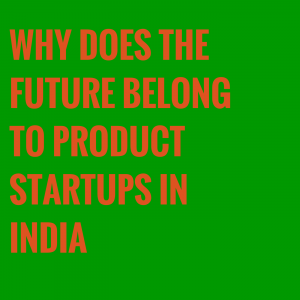 The startup ecosystem has come a long way in the country, especially in the last decade or so. People often ask me at various forums and events as to where I see the startup ecosystem heading in the coming years. While it may be difficult to predict precisely, there are perceptible changes.
The startup ecosystem has come a long way in the country, especially in the last decade or so. People often ask me at various forums and events as to where I see the startup ecosystem heading in the coming years. While it may be difficult to predict precisely, there are perceptible changes.
While the turn of the century was about the rise of the Indian services and outsourcing industry, I believe today it’s about the product companies. The rise of the product startups in the country has been due to numerous reasons, but the stellar growth has only made things exciting.
One of the reasons for the mushrooming of product companies is due to people returning from overseas after they have sensed an opportunity. They want to build a product that addresses the market opportunity. When I returned from the US, I saw some clear patterns and opportunities that I could work on. While one choice was to work with existing companies in the travel and tourism space, the other was to create a brand. I chose to go with the former.
The second clear reason is that people no longer want to do back office work for the world. For example, a lot of companies in the space of analytic work around identifying patterns and ideas for companies that outsource work to them. You will see a lot of individuals from these companies building a product start-up around same principles.
This is the natural progression and evolution of an industry. Outsourcing gained prominence because of cost arbitrage and then the IT companies started getting innovative to increase their share of the pie. They started advising various companies on how they should re-engineer their business processes and additional things they could do.
Phase 1 was about moving cost offshore and labour arbitrage while Phase 2 was making it efficient and optimising it. Indian outsourcing companies started evolving their services by providing additional services and at the same time automating it and making it non-linear to people.
The natural progression after that is if employee of these IT companies were advising clients on how to make their business processes better and how to “go to market” more efficiently, what prevents them from going to market on their own? You will see a lot of companies that are an offshoot of big IT establishments. You see individuals go out and address markets problems and opportunities rather than work for someone else.
Carpe Diem
Moreover, the services company has allowed people with similar ambitions to come together and seize the moment. Services companies have become the place where co-founders have met and most of the time the early hires in a startup are from these services companies. When there was a lot of movements around outsourced product management where companies outsourced their engineering work to India, it was obvious that employees from these services companies would get together and start a product company of their own.
The overall IT industry has evolved and the entrepreneurial ecosystem has been built to some extent and has gained velocity. According to Grant Thornton India, PE investments in India amounted to $1.7 billion last month, taking the overall PE deal tally to $10.2 billion in the first 10 months of this year. Spread across 500 PE deals, investments are up 18 per cent in value terms and 37 per cent in terms of number of deals in 2013. The entire investment community, access to capital and breadth of funds have increased quite dramatically.
The appeal of being a part of a product company is far cooler and hipper, rather than being a part of an IT services firm. For an aspiring entrepreneur, the IT services story has been beaten to death. No one wants to start another company in the outsourcing space and given the number of successful product companies like Druva, InMobi and Zoho, people now have role models. As entrepreneurs see billion dollar companies are now possible in the product space, it serves as fuel to the entrepreneurial fire. An aspiring entrepreneur wants to build a product company that will address a global market need.
Role of Industry Bodies
Industry bodies are also playing their part. Bodies like Nasscom have a separate Product Council and Product Conclave, which brings together a good collection of product companies in the form of peer-to-peer learning and experiences. Another body that is doing a good job is iSPIRT that has some big initiatives. It puts a big focus on the M&A connects where they look to enable big US tech companies to connect to a lot of Indian start-ups. Hence, we have seen a bunch of startups like Little Eye Labs and few others being acquired.
iSPIRT is providing a platform that enables big tech companies to acqui-hire, which essentially is acquiring a startup to get access to their talent. This helps both sides – buyers that know they can do a deal in India and integrate startups effectively and for the startup a viable exit route even if it’s not in a revenue generating state. It is also extremely focused on peer-to-peer learning of product companies. From newsletters from founders and experts to roundtable interactions, the body looks to bring curated number of entrepreneurs to come and share experience of selling globally.
Nothing succeeds better than success and the early successes of various product companies have set the stage as role models. Once the momentum builds it breaks the inertia in the system. I predict starting 2016, we will hear $3-4 billion product companies coming out of India every year. In that sense, 2015 will play an important role in ironing out structural issues in the system and ensuring the ease of doing business is improved.
This Fourth Wave of Indian Enterprise Software Startups is World-Class
India’s enterprise software industry has been slowly bubbling since the 1980s but has generally failed to deliver a large number of high impact, high value companies. We do have some companies that everybody talks about – iFlex, Tally, Zoho – but these are far and few between. I believe that we are seeing a new scalable wave of enterprise software companies coming out of India and there is a potential to deliver several high impact companies over the next decade. Here at Lightspeed Venture Partners, leveraging our global strength in enterprise technologies, we see opportunities to partner with companies that are cloud-native and have cracked a global market – examples of current active categories in India are CRM, analytics/big data, marketing automation and infrastructure.
India’s enterprise software industry has to be looked at separately from the outsourcing/BPO firms like Genpact, Cognizant, Tata Consulting Services and Infosys. Starting in the 1980s and early 1990s, this services industry is now mature and at scale.
Separate from the outsourcing/BPO industry, India’s enterprise software industry (or “products” as it is called by many here in India) has evolved from the 1980s to now in what I think can be divided into four waves, coinciding somewhat with three trends: 1) enterprise software moving from desktop to client-server to cloud; 2) evolution of Indian industry post 1991 liberalization; and 3) increased experience of Indians at successful US product companies.

WAVE 1

The first wave of software products came along in the late 1980s/early 1990s – the focus was desktop products for business accounting. Companies in this wave include Tally Solutions (still the undisputed leader in SME accounting software in India), Instaplan, Muneemji and Easy Accounting.
WAVE 2




This generation of software products emerged in the 1990s as projects within outsourcing firms or from internal services arms of larger corporates. Infosys launched Finacle. Ramco Systems launched its ERP. And Citibank launched CITIL which became i-Flex. Other notable companies included 3i Infotech, Cranes Software, Kale Consultants, Newgen Software, Polaris Financial Technologies,Srishti Software and Subex.
Did you know? Year 1989, the first time CeBIT introduced the concept of a partner country. Our first partner? India! pic.twitter.com/9sWx68Yzmp
— CeBIT India (@cebitindia) February 13, 2014
I remember attending CEBIT in Hanover in 1989 when many of these Indian software and consulting companies were first introduced to Europe.
The late 1990s saw a wavelet of ASP (application service provider) startups in India, most of which got crushed after the dotcom bust.
WAVE 3



![]()
The 2000s saw on-premise India-first companies such as Drishti-Soft, Eka Software, Employwise, iCreate Software, iViz, Manthan Systems, Quick Heal Technologies, Talisma (for which I did some initial product management work while at Aditi Technologies) and Zycus get started. This was the era of 8-10% GDP growth in India which lasted till about 2010. Many of these companies had a direct sales model. After India, they generally expanded into the global South (Africa, Middle East, SE Asia, Latin America) where they found similar customer requirements and little competition from Western software companies. Bootstrapped in their earlier years, some of these companies grew over several years and have broken through to $25 million+ in annual revenue. Key verticals have traditionally been BFSI (banking, financial services and insurance), telecom, retail/FMCG (fast-moving consumer goods aka CPG in the US) and outsourcing/BPO.
Having been around for over a decade, some of these companies generally face the challenge of migrating to the cloud, upgrading user experience to modern Web 2.0 levels, and expanding addressable markets beyond the global South to the US and Europe. We have seen some of these companies get venture funded, typically at much later stages in their go-to-market relative to US-based software companies. Several of these companies have received funding in the past couple of years, ostensibly to “go international” and “go cloud,” not an easy task, especially when done together.
WAVE 4
Starting in around 2010, a new wave of cloud-native companies were launched, perhaps following the slowdown in India’s economy and the growth/acceptance of SaaS as a delivery model and as a sales model in the US. These companies have grown and now could power beyond the $10M/year revenue glass ceiling. The reason for the scale potential being higher for this cloud-native wave is the cracking of efficient online sales channels to reach markets globally.
Why this decade? Because there is an increased willingness of companies around the world to search for and buy software products online. There is now a large pool of founders who have worked at global enterprise product companies (e.g. Indian offshore development centers or in Silicon Valley itself with companies like SAP, Oracle, Google, Microsoft, Adobe) and have experience in product management, marketing and sales. And finally, there has been a dramatic reduction in the capital required to bootstrap enterprise software companies. Everybody uses AWS and software from other startups to get started. It’s quite meta.
Wave 4 companies have the opportunity to break through the barriers that previously relegated Indian enterprise software companies to selling to the global South. We have seen Atlassian (Australia), Zendesk (Denmark) and Outbrain (Israel) do this move to Western or global markets. Zoho is an Indian company that is rumored to be at $100 million per year revenue scale – they have been part of many of the waves I have described.
This cloud-native wave, I believe, can be divided into two dimensions. One dimension is the platform/tools companies versus workflow automation (applications) companies. The other dimension is India-first companies versus the global-first companies. We see opportunities in all four quadrants, each having its own challenges. We are interested in looking at companies in all these segments, with a bias toward companies which have reached some scale ($1M ARR) and are going after large addressable markets with aggressive sales & marketing execution.
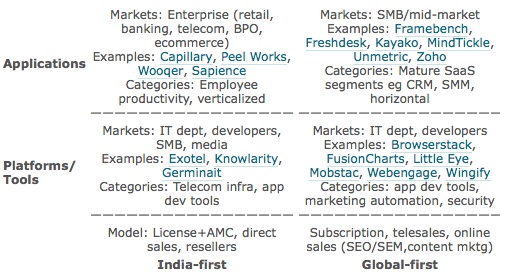
[Please note this is not a comprehensive list of companies nor a view on which companies we admire or not]
Global-first companies coming out of India have started to crack or have cracked the online sales model, using SEO, SEM, content marketing and telesales. They are typically going after mature segments where buyers are typing keywords into Google at a high rate. This online selling model results in an SMB and mid-market customer base. In many cases, founders may have to move to the US to enterprise sales. It’s worth noting that scale markets are not necessarily all in the US – companies could get built with a general global diffusion of customers, perhaps with help from resellers.
I see India-first companies typically going after newer high-growth companies in India (e.g. ecommerce, retail) and startups. Some go after Indian arms of multinationals (MNCs). This is a reasonable early adopter market to cut a product’s teeth on, but has limited ability to scale. Of the newer crop of India-first companies, very few go after large enterprises in India – there are exceptions like Peelworks and Wooqer. The model here generally is SaaS as a delivery model but not SaaS as a sales model (ie direct sales, not self-service). Many software companies are essentially verticalized.
We continue to see a few high-ticket, high touch direct sales enterprise software companies which are global-first, including companies like Cloudbyte, Druva,Indix, Sirion Labs and Vaultize. Many of these start out with teams in both Silicon Valley and India or transplant themselves to the Valley over time. I think this will continue to happen but we will not see the explosion here that we are seeing in the number of companies utilizing low touch online sales models. I see several high-impact companies coming out of these direct sales enterprise software startups as well.
I think this dichotomy between India-first and global-first companies is interesting and makes India a distinctly different type of investment geography, different from Israel (which has very small domestic market where tech companies move to the US very quickly), different from China (which mostly has domestic market focused startups and very little enterprise software) and different from the US (which is primarily domestic-focused in $500B enterprise tech industry in the early years of most startups). In terms of investor and founder interest, the pendulum may also swing back and forth between these two models as the Indian economy grows, sometimes at high speed, sometimes at a snails pace.
[With input from the team at iSPIRT and several of the companies mentioned above].
Reblogged from YourStory & LightSpeed Venture Partners blog.
We do Cross-Border Investments! Domestic E-Commerce and E-Retail too! Nexus Venture Partners #ThinkInvestor
ThinkInvestor is iSPIRT and ProductNation’s new initiative to serve as a catalyst between Venture Capital firms, Angels, Angel Networks and Entrepreneurs. It is to go beyond brochure ware and dig deeper into the whole life cycle of a typical investment; from introductions, funding, styles of on-going engagement, to exits. And in the process, capture their views on global and local trends, and the entrepreneurial ecosystem in India. 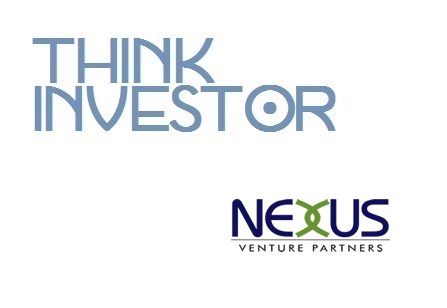 Nexus Venture Partners invest in early and early growth stage companies across sectors in India and US. They are a team of successful entrepreneurs with extensive investing and operating experience, who love to get their hands dirty. They understand the unique challenges faced by entrepreneurs and know that it takes teamwork and exceptional execution capability for a company to succeed. Their partner companies have access to the entire Nexus team in India and Silicon Valley for help in recruiting talent, forging new alliances, opening doors to new customers, shaping strategy and connecting with best-of-breed executives, advisers, co-investors and board members.
Nexus Venture Partners invest in early and early growth stage companies across sectors in India and US. They are a team of successful entrepreneurs with extensive investing and operating experience, who love to get their hands dirty. They understand the unique challenges faced by entrepreneurs and know that it takes teamwork and exceptional execution capability for a company to succeed. Their partner companies have access to the entire Nexus team in India and Silicon Valley for help in recruiting talent, forging new alliances, opening doors to new customers, shaping strategy and connecting with best-of-breed executives, advisers, co-investors and board members.
ProductNation sat down with Sandeep Singhal, Co-Founder of Nexus Venture Partners for this interview.
 Avinash Raghava of iSPIRT and ProductNation thanked Sandeep for his, and Nexus VP’s outstanding support and encouragement for the upcoming InTech50, a platform where Indian product companies showcase their arrival on the global landscape at the Leela Palace in Bangalore, April 9th – 10th, 2014! More information on this event is here!
Avinash Raghava of iSPIRT and ProductNation thanked Sandeep for his, and Nexus VP’s outstanding support and encouragement for the upcoming InTech50, a platform where Indian product companies showcase their arrival on the global landscape at the Leela Palace in Bangalore, April 9th – 10th, 2014! More information on this event is here!
Here’s what we heard in the interview:
Tell us a little bit about Nexus Venture Partners – The size of your fund, stage and focus.
Nexus Venture Partners is a $270M fund. We are on our third fund and our funds are of the typical 10 + 2 years extension lives of venture funds. In each fund, the first half of the ten years is spent finding and funding companies, and the second half is used nurturing and finding additional rounds of financing for them. We raised our third and latest fund in March 2012. We are about halfway through the investment cycle for this fund. We are primarily a Series A investor. $2M to $5M is our sweet spot. We do some seed investments if the market is large enough, and the company still needs to think through its technology or market risk more thoroughly. And we are convinced that it is a company we need to support on a longer term basis. We have been involved in a few Series B investments also. These happen in case we missed out at the Series A stage and they took money from somebody else. Regarding our focus areas, we are primarily interested in cross-border opportunities; India based companies interested in the US market or US based companies interested in the Indian market. We are also interested in the retail space in India that is experiencing exponential growth; e-commerce, e-retail or e-commerce enablement companies. We are interested in Healthcare and Education verticals. Eye Q is a good example of our healthcare investment in the Ophthalmology space. We are interested in Hub and Spoke models, especially in Education. We are also interested in enterprise technologies, mostly software (open source in particular) and cloud based. We haven’t done anything in hardware.
What’s the best way for an entrepreneur to get in touch with you? What works and what does not?
We are known to be approachable. While it is always best to get an introduction, we do respond to emails also. We ask people to send us a business plan if through email. We get a lot of referrals from our portfolio companies, and their founders. A number of these are already vendors to our portfolio companies. We also do outreach efforts like conferences where we meet entrepreneurs and get to know their companies. A number of entrepreneurs are still learning the ropes in India, and we want to help the ecosystem by being a bit flexible on how they reach us and at any stage of their development. We provide them feedback on how ready they are, or are not, for an investment. Sometimes it works, and sometimes that feedback is ignored!
How long does it take for you to decide on investing? What is your due diligence process?
That’s a very situation-specific timeline. In one case, we had an entrepreneur come to us for investment but 90% of their company revenue was from services and was not suitable for us. They however had a plan to switch their company from a services focus to a product focus and kept in touch with me. They had a clear marketing and sales plan to move to a product focus and when they came to us again, 80% of their revenues were coming from products. This took 2 years but is not typical. In some situations, if the company is very early but have a compelling product there is not much you can glean from numbers at that stage. We made a decision to invest in as little as 1 week in such cases. Typically it takes 2 weeks to a month for business diligence and a month to a month and a half for closure. Overall about 2 to 3 months for the whole process. Our process typically consists of Business and Financial Due Diligence. For the business part, we are looking at four key things:
1. The Team – How good is the management team, are the members complementary to each other?
2. The Market – How big is the market? What are the pain points in the market? How is this company addressing them? Will the customer pay for addressing this pain?
3. The Competition – If there are competitors in this market, who are they?
4. Capital Efficiency – When would the next capital event for this company be? How long would raising $2M to $3M last for this company and can they get to the next funding event successfully with enough growth?
These four areas would take about 2 weeks to a month to get a handle on. But as they are talking to us, we introduce them to potential customers and see how they do. The Financial Due diligence for very early stage companies is not very much since the numbers may not mean much at that stage except looking at things like whether they are incorporated properly. If they have a few customers already, then we make sure that audits have been done properly. In India at least, with $2M to $3M investments, we have been a solo investor for the most part. In the US, it has been a mixed bag with more syndicates with other investors.
What’s your style of engagement once you have funded a company?
We think of our role as a facilitator once we have funded a company. We have never taken a majority position in any company. We are an Active Investor driven mostly by what the entrepreneur needs from us. In the beginning it has to do with strategy and team building. Do they have the best talent available? If not, can we help them get the best talent? We help our portfolio companies with strategy around how to compete better, and grow faster as needed. Most of our entrepreneurs say that we add value on their boards of directors. We help portfolio companies with partner and customer introductions. We make sure that they are done at the right time, and in the right way. Sometimes the company may not be ready as yet for a customer introduction since the product may not be ready enough.
Do you have any formal meetings of CEOs/CXOs of your portfolio companies?
We have shied away from doing those kinds of meetings since it always inconveniences someone, to be away, and at a particular place. All of our CEOs are at our annual Nexus meeting. We end up doing a lot of things one on one. Every company in our portfolio is welcome to interact, communicate, and ask for help from anybody on the Nexus team, no matter who is on the board. This helps a lot since the chances of getting that help is more, with the entire team.Someone in our team may have seen a similar situation or handled a similar problem recently with one of their companies.
What are some of the exciting companies in your portfolio now? Exciting new business models?
All of our portfolio companies are exciting to us. We have had some exciting investments in e-commerce companies like BigShoeBazaar (BSB). On the product side we have had some exciting companies like Druva, Kaltura and Aryaka. Datagres relocated recently to Silicon Valley. Scalarc is an exciting investment in the cloud computing space. All these companies have already gone through the gauntlet of passing technology risks, having the products in the hands of customers and scaling revenues. Pubmatic had scaled quite a bit.
What are your thoughts on exits for your portfolio companies? Thoughts on recent exits like Little Eye Labs or Redbus?
We have had successful exits with 8 of our portfolio companies. all strategic mergers and acquisitions (M&As). All them were cross borders ones also. The US primary market for M&As is still showing a lot of strength, but not the Indian domestic market. I don’t expect things to improve till the elections are over. When it is over, I expect the demand in India for high growth companies to grow rapidly. Nexus Venture Partners does not build companies for acquisition but for public listing! We have found it useful to advice our portfolio companies to have a 5 to 7 year horizon and plan for revenues that will help them have a successful IPO. In the course of building such companies, successful M&A opportunities may arise and if they do well and good! Companies like Nimble Storage or NetApp were built this way and that’s what we advice our portfolio companies! The Little Eye Labs and the Redbus exits are all good news for the Indian ecosystem even though the former might have been an acqui-hire one. Exits like these make corporate development teams abroad sit up and take notice of Indian start-ups!
What advice do you have for the Entrepreneurial Ecosystem in India?
I have four pieces of advice for new entrepreneurs in India:
1. Work on global products – Test your hypothesis globally – Before developing a line of code test out your product hypothesis globally. May be with the help of a friend abroad if need be.
2. Build cross-Border companies from Day One – Focusing only on the India market first and then scaling globally will cost companies 18 to 24 months in time lost. Reduce this time by working with a cross-border co-founder from the start. This is will prove to be highly valuable.
3. Focus on growth and not just surviving – Growth is as important as cash flow. Speed of growth is critical. It takes a lot of confidence to grow quickly even if takes raising more money rather than just focus on cash flow.
4. Be more confident globally – We still see a lack of confidence in Indian companies when considering to go global. No reason to be so!
If someone comes to you from a services company with a product idea what would your advice be?
I would first assess whether this person understands what it takes to build a product and a product company. The services model is very different, The person may be very strong technically. I would still ask them to pair up with a strong product management person that has done proven products for the global marketplace. There needs to be a good marriage between the technical and product management skills. I still see a lot of Indian entrepreneurs come to us with Indian versions of products in the global marketplace, but wanting to compete on lower price. I strongly discourage these kinds of entrepreneurs since the labor arbitrage argument does not take into account the price of on-going innovation. Innovation and differentiation needs to be priced into the equation. You don’t need large teams but you need the best teams. They cost the same whether they are in Silicon Valley or Bangalore! Competing on price makes you compromise on innovation and in the long run does not work!
Product warriors, pick your battles!
The first question that I asked iSPIRT volunteers running PNCamp, the first ever bootcamp exclusively focused on product entrepreneurs in India, was why Pune? They pointed to Dilip Ittyera whose greying strands of hair masks his passion to firmly perch Pune on the product map of India. Later during many conversations, it became evident why Pune was the destination for the “product mafia” (term courtesy Pallav Nadhani) for an extended Playbook roundtable format bootcamp, the PN Camp, for a couple of days. In its subtlety, Pune hides its product quotient. There have been global success stories from this quiet city that really doesn’t hit you on your face: QuickHeal, Druva, Pubmatic and let’s hope counting.
Pallav infused energy in his intro to the camp that would make you say “let’s make it happen” with a pumped fist. The very essence of this bootcamp was to enable lifelong bonds between entrepreneurs so that they can learn from each other’s mistakes. For entrepreneurs operating with limited resources and entrapped in a lonely journey, the peer group lending a hand makes it even more exciting.
Another unique aspect of the camp was “cohorting” applicants for maximum impact. Only one out of every two applicants was accepted and then divided into cohorts matching the state in which they are in their entrepreneurial journey. The first day was for entrepreneurs just starting out to “discover” (discovery hack) the way to do it and second day was for “happy confused group” (scale hack) where the entrepreneur has figured out the product, has found a few customers and struck there, without a clue on how to take it forward.
As each cohort groups were ushered into their respective sessions, intense discussions ensued. The camp organizers had made it clear that the sessions wouldn’t be gyan but experiential discussions. A successful entrepreneur had a presentation and the questions he raised were basically discussed by the 15 to 17 entrepreneurs in each group for over three hours. The successful product entrepreneur’s success becomes a playbook for success-aspiring entrepreneurs to follow and reach heights.
Pick your battles
There are only 24 hours in a day. And it is left to the entrepreneur to choose what he or she wants to do. Picking the right battles pays you rich dividends. This is the thought behind the session ‘Picking Your Battles’ by Practo’s cofounder N.D. Shashank. Basically, Shashank’s presentation centred on four questions:
- Do you have a compelling story around your startup?
- Is your product really different?
- Why is it exciting?
- Does your product really solve a problem?
Story: If you are unable to build a compelling story around your idea and the startup, you will be less motivated to continue. So just ask yourself if the problem you are solving or your idea will keep you going for x number of years. Then build a story around the idea so that anytime you are asked why you started up, you can tell the story, which will be appealing. It’s another matter that the story will get refined over time like the events in history getting different perspectives at different points of time in future.
Differentiators: How different is your product? It would be great to create an entry barrier for a competitor to replicate your model. Here Kunal Shah of Free Charge provided an apt explanation. Create something that will become a habit for someone to use. For example, although G+ has better features than Facebook, users don’t switch because they are used to Facebook. Only when another innovation happens that changes this habit, it would be Facebook all the way. You should think of ways to appeal to the users by making a difference in the way the product serves the user that he wants to come back and use it over and over again. Sometimes customers can become your salespeople that they recommend your product to their friends and people in the network.
Excitement: Taking a cue from Practo’s experience, Shashank said that among the specialists, dentists were high in number. So dentists were first targeted for PractoRay, a Practo software used by the doctor to schedule appointments with patients and keep their medical records. This proved successful as more users felt excited to find dentists in their neighbourhood. Customers will buy if they find the product useful and not make a fuss over price.
Solving a problem: You should build features in your product that are must-have and not nice to have. Then you should ask if your customers will pay for those must-have features. Unless you are solving a real problem, customers will not pay. Usually, the problem you are solving is the problem you faced yourself. Shashank got the spark of an idea on a platform like Practo after experiencing difficulty in mailing his father’s medical records to an expert in the United States. Then he studied what ails the system and built Practo to address each one of the issues he observed such as waiting times for patients (Practo helps you schedule appointments), non-digital medical records (information can be stored using Practo’s software), storing them and sending them (possible in the Practo platform).
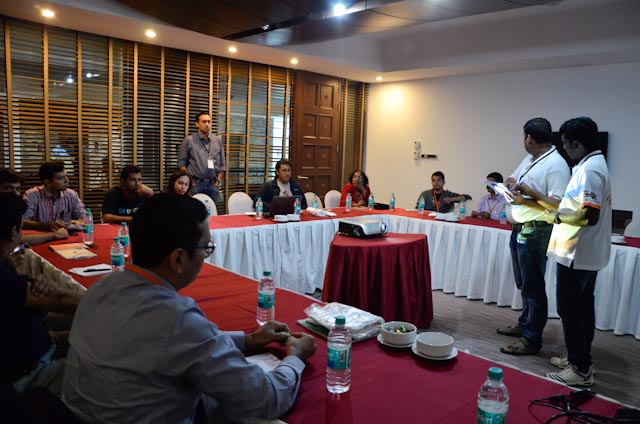 Many aspects of product building, feature adding, and finding customers were discussed elaborately. Just to give one more useful example, when there is friction, it’s best to have a basic free model and then price the product for different sets of customers. Differential pricing by adding features is another
Many aspects of product building, feature adding, and finding customers were discussed elaborately. Just to give one more useful example, when there is friction, it’s best to have a basic free model and then price the product for different sets of customers. Differential pricing by adding features is another
Q&A with Software Startup Druva
Editor’s note: Druva’s inSync is a cloud-based unified solution for managing endpoint data in a mobile world. In this interview, Jaspreet Singh, founder and CEO, explains how the product differentiates in its market and how it provides value for enterprises. He also discusses an important attribute for startup CEOs. This article is brought to SandHill readers in partnership with ProductNation.
SandHill.com: When and where was your company launched?
Jaspreet Singh: We founded Druva in July of 2008 at Pune, India. We eventually moved to the United States after a Sequoia investment in January 2010.
SandHill.com: Please describe your product and your market.
Jaspreet Singh: Druva provides a unified solution to protect and manage endpoint data for enterprises. The solution integrates three functionalities — award winning backup, secure file-sharing and data loss prevention and analytics — to create a single unified cloud for IT to protect, manage and empower end users.
The enterprise endpoint landscape is ever changing. From PCs and laptops to smartphones and tablet devices and now a rising BYOD trend, enterprise data is spread across users, platforms, devices and geographies.
Data protection has been a crowded market space filled with legacy solution providers that have upgraded traditional server backup solutions to fit the mobile enterprise user. This has resulted in a lot of unhappy enterprises and great resistance from the end users to using those products because the solutions are resource intensive or do not offer sufficient security over public networks.
We built inSync specifically for the mobile user to address all the issues that legacy solutions were failing to address. The non-intrusive nature of the solution ensures that end users don’t even know it’s there. Our product helps users make the best use of the data and at the same time enables IT to protect and control the same information. The users can use Druva inSync to share and collaborate with peers on the data from any device. IT gets a single console to back up corporate information, visibility into what and with whom users are sharing, and is able to control the data using data loss prevention and analytics. It’s the industry’s first solution to integrate these features into a single unified solution.


